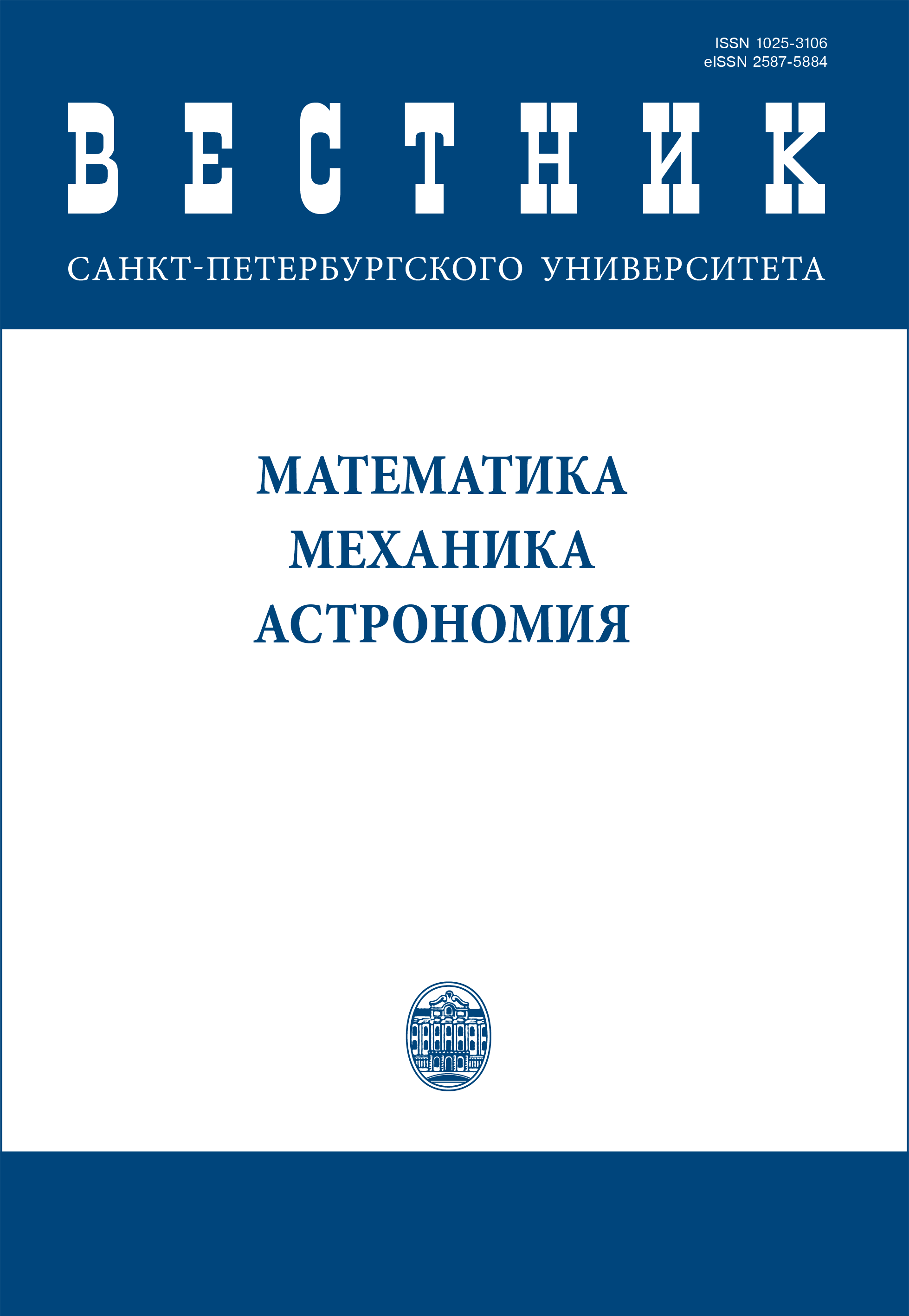On the approximation of the field of attraction of a rigid body by the field of attraction of four material points of the same mass
DOI:
https://doi.org/10.21638/spbu01.2024.211Abstract
The problem of approximation of the gravitational potential of a rigid body by the potential of a system of four identical point masses is studied. Considering the potential in the form of expansion by a parameter characterizing the ratio of the mean body size to the distance to the test point of space, an approach is proposed to construct an approximate expression up to the terms of the third order of smallness. This approach is used to construct a model of the field of attraction for the comet nucleus (67P)Churyumov - Gerasimenko.Keywords:
moments of inertia of a rigid body, approximation of the potential of attraction, comet (67P)Churyumov - Gerasimenko
Downloads
References
Литература
References
Downloads
Published
How to Cite
Issue
Section
License
Articles of "Vestnik of Saint Petersburg University. Mathematics. Mechanics. Astronomy" are open access distributed under the terms of the License Agreement with Saint Petersburg State University, which permits to the authors unrestricted distribution and self-archiving free of charge.




